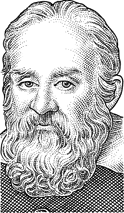
Source of graph: online version of the NYT article quoted and cited below.
(p. A17) Americans are by all measures a deeply religious people, but they are also deeply ignorant about religion.
Researchers from the independent Pew Forum on Religion and Public Life phoned more than 3,400 Americans and asked them 32 questions about the Bible, Christianity and other world religions, famous religious figures and the constitutional principles governing religion in public life.
On average, people who took the survey answered half the questions incorrectly, and many flubbed even questions about their own faith.
Those who scored the highest were atheists and agnostics, as well as two religious minorities: Jews and Mormons. The results were the same even after the researchers controlled for factors like age and racial differences.
“Even after all these other factors, including education, are taken into account, atheists and agnostics, Jews and Mormons still outperform all the other religious groups in our survey,” said Greg Smith, a senior researcher at Pew.
That finding might surprise some, but not Dave Silverman, president of American Atheists, an advocacy group for nonbelievers that was founded by Madalyn Murray O’Hair.
“I have heard many times that atheists know more about religion than religious people,” Mr. Silverman said. “Atheism is an effect of that knowledge, not a lack of knowledge. I gave a Bible to my daughter. That’s how you make atheists.”
For the full story, see:
LAURIE GOODSTEIN. “Basic Religion Test Stumps Many Americans.” The New York Times (Tues., September 28, 2010): A17.










